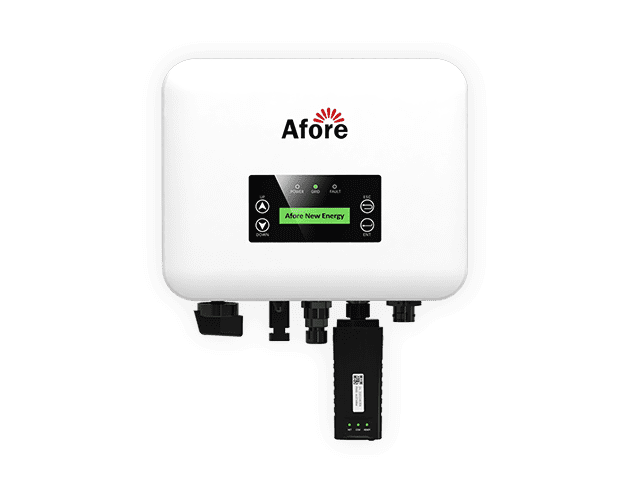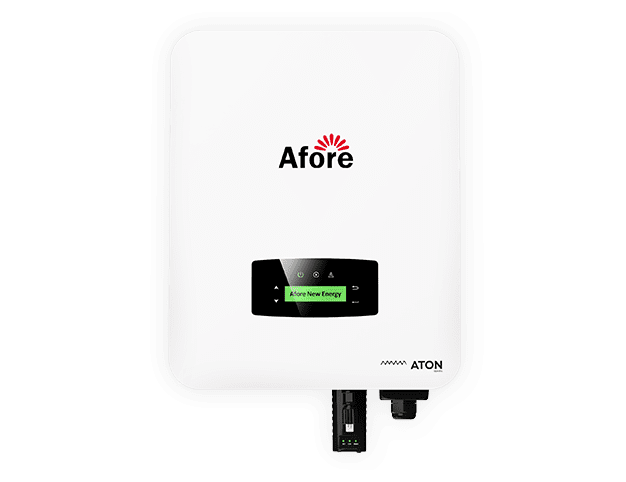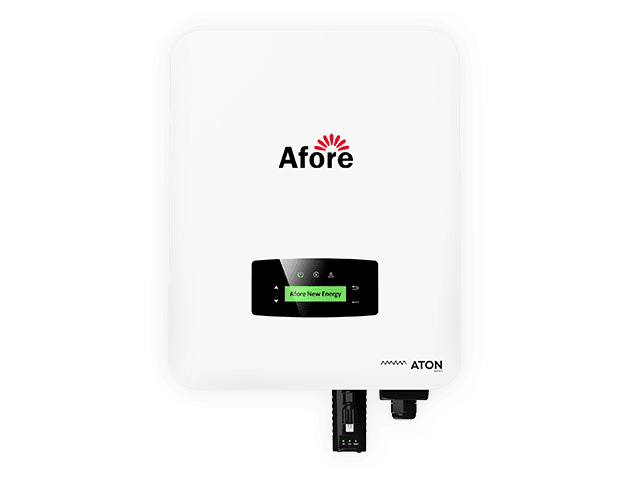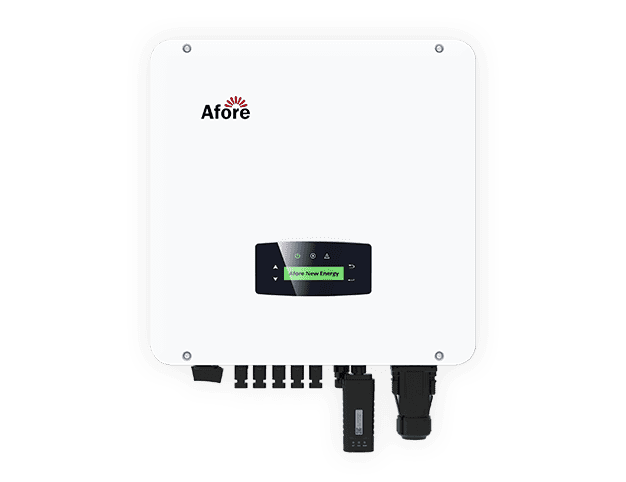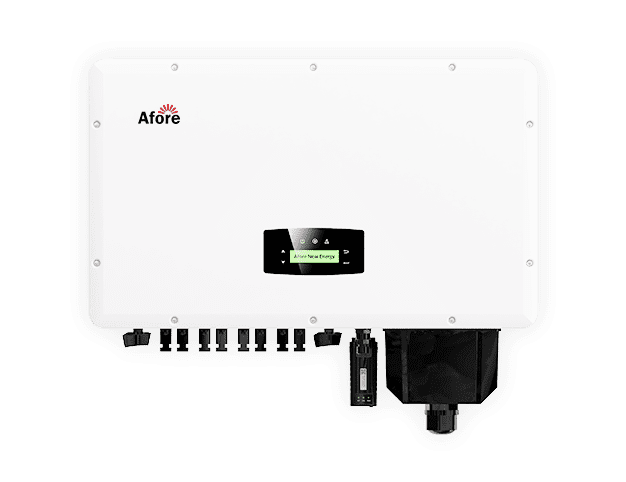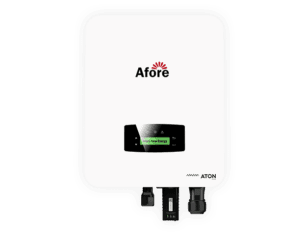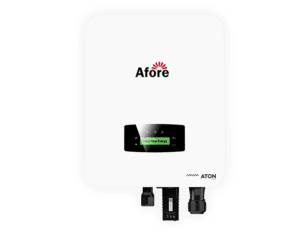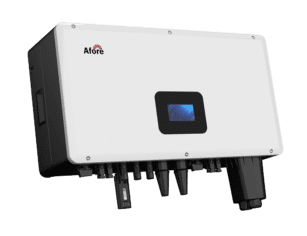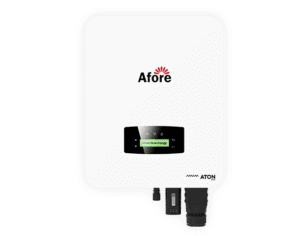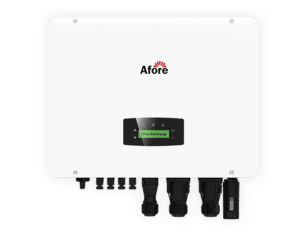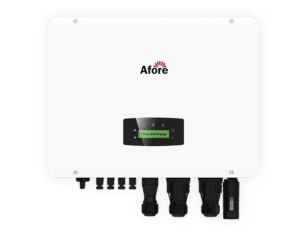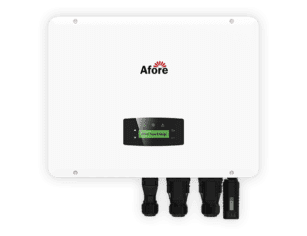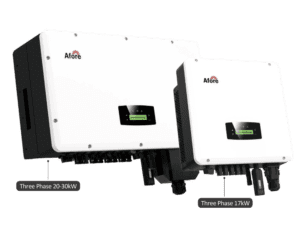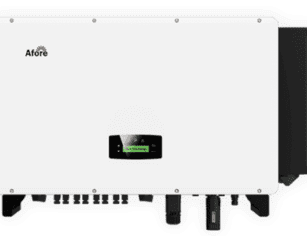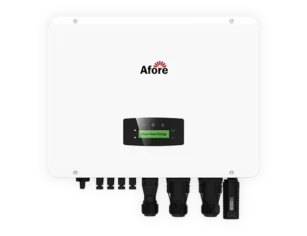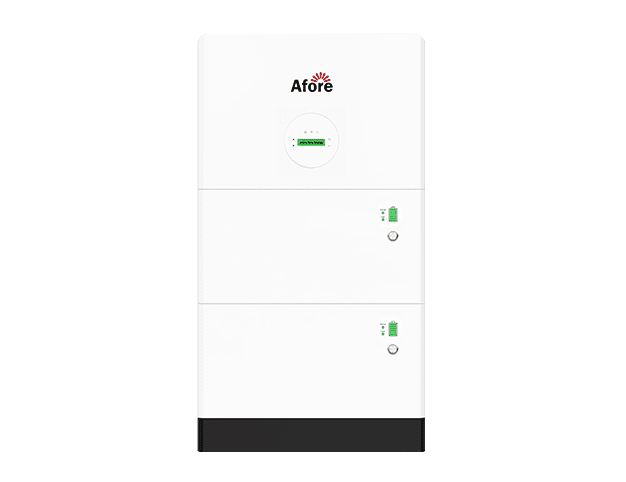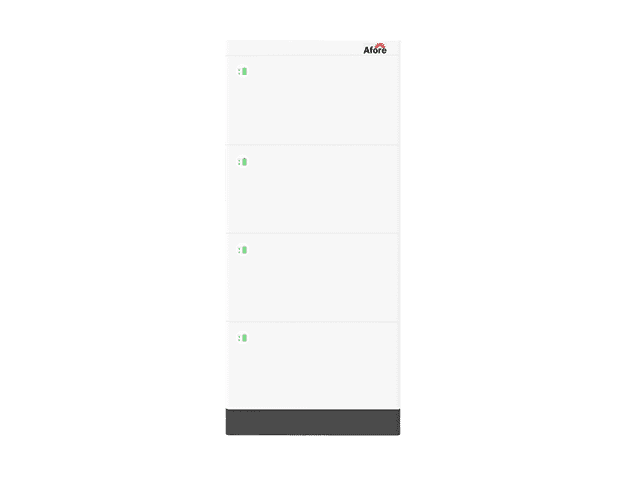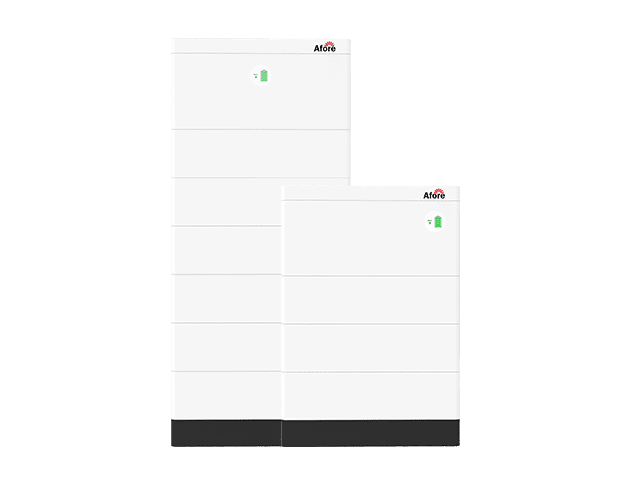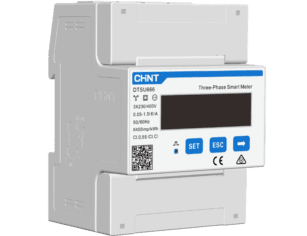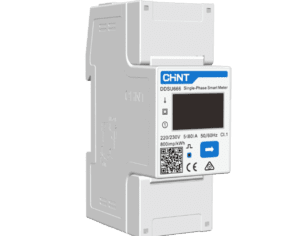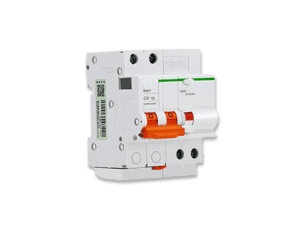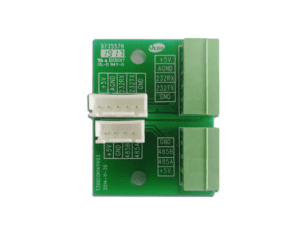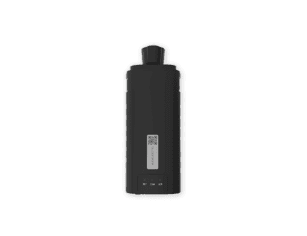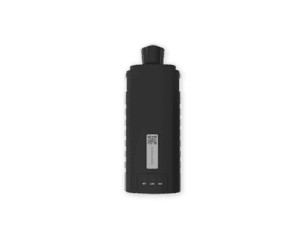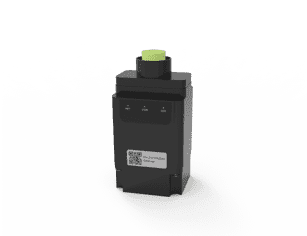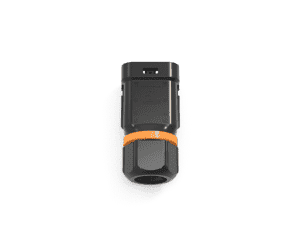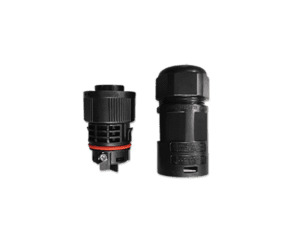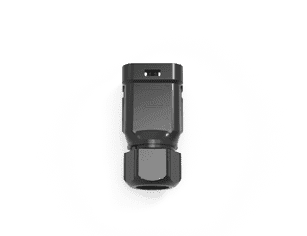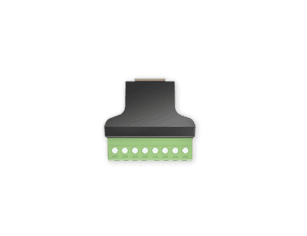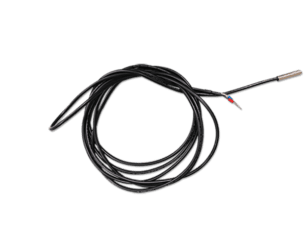Common Solar Inverter Problems and How to Fix Them

Table of Contents
Solar energy systems have grown in popularity over the past decade. With clean energy on the rise, more homeowners and businesses are turning to solar panels as a sustainable solution. However, when your solar setup isn’t delivering the performance you expected, the culprit is often the solar inverter. These sophisticated devices play a crucial role in converting the direct current (DC) electricity generated by solar panels into alternating current (AC) power usable by your home.
Solar inverter problems can cause performance dips, system outages, and even long-term damage to your setup if left unaddressed. In this article, we’ll break down the most common solar inverter problems, explain how to detect them, and provide practical troubleshooting and maintenance tips. We’ll also touch on when it’s time to repair or replace your inverter, and answer frequently asked questions that concern many solar system owners.
By the end of this guide, you’ll have a clearer understanding of how your solar inverter works, what can go wrong, and what steps to take to keep your solar power system running smoothly.
What Is a Solar Inverter and Why Is It Important?
The Role of the Inverter in a Solar Power System
The solar inverter is the heart of your solar energy system. While solar panels generate electricity, it’s the inverter that makes that electricity usable. Panels produce DC power, which is fine for batteries but incompatible with most home appliances. The inverter converts DC into AC power, which powers your refrigerator, lights, TV, and more.
Solar inverters also handle other essential tasks like synchronizing your system with the utility grid, monitoring performance, and even communicating with smart home devices. So when you experience solar inverter problems, it can affect your entire home’s energy performance.
Types of Solar Inverters
- String Inverters: These are the most common type used in residential systems. A single inverter connects to a “string” of solar panels. If one panel underperforms, the whole string’s output drops.
- Microinverters: Installed on each individual panel, these inverters allow independent panel performance, making them great for rooftops with shading issues.
- Hybrid Inverters: These can manage both solar input and battery storage, enabling energy independence and backup power.
- Central Inverters: Used mainly in large-scale commercial installations.
Choosing the right type of solar inverter affects how you experience solar inverter problems and how easy they are to fix.
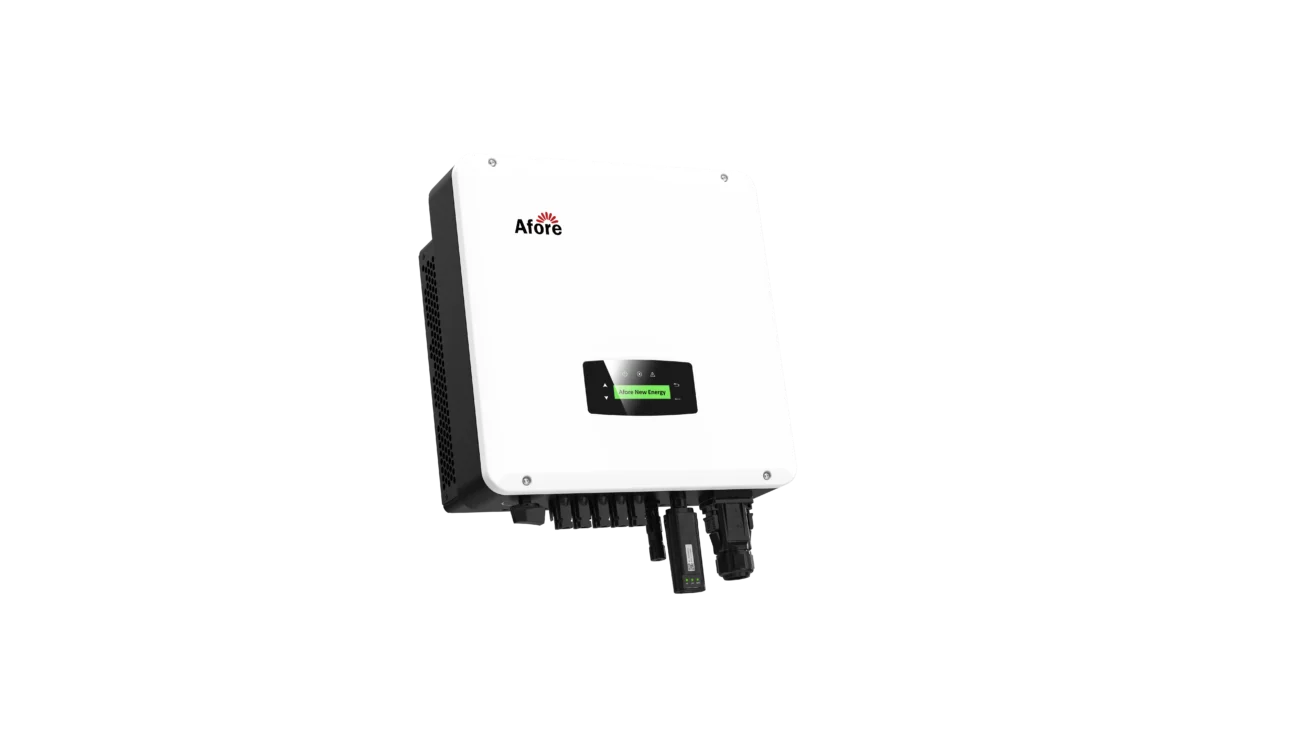
Top 5 Most Common Solar Inverter Problems
If you’ve ever found yourself scratching your head because your solar system isn’t performing as it should, you’re not alone. Many homeowners and businesses encounter solar inverter problems that compromise the efficiency and reliability of their renewable energy systems. While solar inverters are built to be robust, they aren’t invincible. Below are the five most frequently reported issues—and more importantly, how to identify and address them before they escalate.
1. No Power Output
Few things are as frustrating as checking your solar monitoring app only to see a flatline. A complete lack of power output is one of the most obvious—and concerning—solar inverter problems.
Why It Happens:
- Disconnected DC or AC cables: If the inverter is not receiving power from the solar panels or cannot deliver it to your home’s electrical system, output drops to zero.
- Blown internal fuses: Just like in your home’s breaker box, inverters have protective fuses that trip in case of power surges.
- Grid disconnection: Some inverters shut down automatically when they sense instability from the grid (anti-islanding protection).
- Battery or MPPT controller failure (in hybrid inverters).
How to Fix It:
First, look at the display screen on the inverter. If it’s completely blank, it could be a power supply issue. Make sure that the DC input voltage is present. You can use a multimeter for a basic check. If the screen is lit but the output is zero, try restarting the inverter per manufacturer instructions. Still nothing? It’s time to call a licensed solar technician to inspect the internal components or test the inverter under load.
- Pro Tip: Never open your solar inverter casing unless you’re trained to handle high-voltage equipment. It’s not just risky—it can void your warranty.
2. Inverter Not Responding or Shutting Down Randomly
Intermittent shutdowns or unresponsiveness are red flags. One day your inverter works fine, and the next day, it’s off—even when the sun is shining brightly. This erratic behavior is one of the most annoying solar inverter problems because it can be hard to replicate during inspection.
What Causes This?
- Overheating: Most inverters are mounted outdoors or in garages where temperatures can soar. Overheating triggers automatic shutdowns to protect the device.
- Poor ventilation: Dust buildup or a cluttered installation area can block airflow and exacerbate heat issues.
- Internal component failure: Aging capacitors and circuit boards may intermittently fail.
- Incompatible load: If the inverter is undersized or connected to devices drawing higher wattage than it can support, it may trip and reset frequently.
How to Address It:
Start by inspecting the ambient temperature and the inverter’s cooling fans or heat sinks. Clear any obstructions and clean dust using a dry cloth or compressed air. If the shutdowns continue, your technician might need to run diagnostics on the inverter’s firmware and internal temperature logs.
- Expert Insight: Regular maintenance—including seasonal cleaning and annual inspections—can greatly extend the life of your solar inverter and prevent random shutdowns from becoming permanent failures.
3. Error Codes and Fault Messages
Solar inverters are smart—they’re designed to self-diagnose. Most modern units display error codes when something goes wrong. But let’s be honest: reading those cryptic alphanumeric codes can feel like decoding ancient runes.
Typical Error Messages Include:
- OV/UV (Over Voltage / Under Voltage): Signals that grid voltage is out of range.
- GFCI Fault: Ground fault circuit interruption; possibly a wiring insulation problem or water ingress.
- Isolation Fault: Often seen in string inverters, indicating leakage current or grounding problems.
- No Grid: The inverter isn’t detecting grid power (which may be due to a tripped main breaker).
What You Can Do:
Always refer to the manufacturer’s manual for the exact meaning of error codes. If a code repeats after a reset or occurs daily, get a technician involved. Persistent inverter faults may be masking deeper electrical issues or damaged panels.
- Remember: Ignoring error codes doesn’t just reduce your solar output—it can create safety hazards if left unaddressed.
4. Low Efficiency or Inconsistent Output
You may notice that your solar production doesn’t match what it used to be—or what your installer promised. Low or inconsistent power delivery is a subtle but serious solar inverter problem.
Possible Causes:
- Mismatch between panels and inverter capacity: If your system was improperly sized, the inverter may be clipping output during peak sun hours.
- Panel degradation or soiling: Dirt, shade, or snow can cause voltage drops, leading to uneven MPPT tracking.
- Loose or corroded connections: Voltage drop can occur across terminals, reducing inverter input.
- Aging inverter components: As internal electronics degrade, performance gradually declines.
How to Troubleshoot:
Use a solar monitoring app or portal to compare historical performance data. Sudden or seasonal dips can often be explained by weather—but if performance declines steadily or inconsistently, it’s time to test the inverter’s efficiency.
A qualified technician may use an I-V curve tracer or multimeter to test each string input to see if it’s delivering the expected voltage and current. In some cases, firmware updates can improve MPPT accuracy and efficiency.
- Pro Tip: Installers should always leave you with performance benchmarks. These help you detect whether your solar inverter is underperforming or if it’s an issue elsewhere in your solar system.
5. Distorted Waveform or Grid Synchronization Issues
Your solar system is connected to the grid, which means it must “play nice” with your utility’s frequency and voltage standards. One of the more technical but damaging solar inverter problems is a distorted waveform or poor grid synchronization.
Symptoms Include:
- Flickering lights in your home
- Appliances acting erratically
- Audible buzzing from transformers or power strips
- Tripped breakers or residual current devices
What Causes This?
- Harmonic distortion: Bad capacitors or failing MOSFETs in the inverter circuitry can distort the AC waveform.
- Feedback loop interference: If your solar inverter is older or incompatible with certain smart appliances, it can introduce feedback into the circuit.
- Voltage fluctuation or sag: Poor utility voltage regulation can lead to synchronization failures, especially with high-precision inverters.
How to Fix It:
Testing waveform distortion requires specialized tools like oscilloscopes, which are typically used by licensed electricians or solar engineers. They’ll check the shape of the output sine wave to detect anomalies.
Some modern inverters have built-in diagnostics to warn you of total harmonic distortion (THD) above a safe threshold. If distortion is persistent, replacing the inverter or adding a power conditioner may be necessary.
Did You Know? A poorly functioning solar inverter with distorted output doesn’t just waste energy—it can shorten the life of your appliances by delivering unstable electricity.
By understanding these common solar inverter problems, you’re already a step ahead of many solar users. The key takeaway? Your inverter is the heart of your solar power system, and like any heart, it needs regular care and attention to keep things flowing smoothly.
If you’re experiencing any of the above issues, don’t delay. Monitoring your system, performing regular visual inspections, and knowing when to call in a professional can prevent minor issues from turning into costly repairs—or system-wide failures.
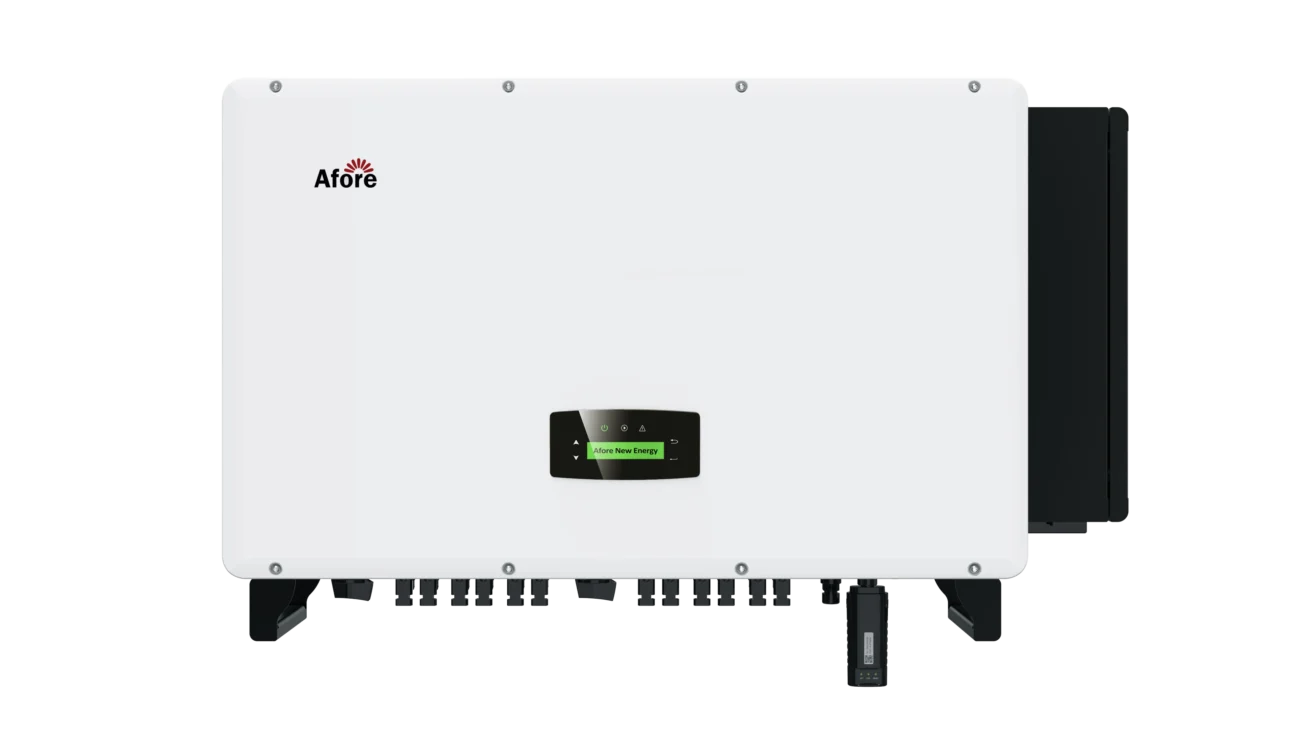
Signs That Indicate Your Solar Inverter May Be Faulty
When your solar energy system isn’t pulling its weight, your solar inverter is often the first place to investigate. Inverter issues don’t always start with dramatic shutdowns—they often begin with subtle signs that are easy to miss if you’re not paying attention. Recognizing these early warning signals is crucial not only for protecting your system’s performance but also for avoiding costly long-term damage.
Here are three of the most telling signs that your solar inverter may be heading toward failure—and what they could mean for your overall solar setup.
Warning Lights or No Display
A healthy solar inverter typically features a small digital screen and indicator lights to communicate its operating status. Depending on the brand and model, these lights might be color-coded (green, orange, red) or use blinking patterns to relay messages.
What to Watch For:
- Red or orange warning lights: These often indicate errors such as over-voltage, ground faults, or temperature issues. A red light usually means a critical fault that’s interrupting normal inverter function.
- No lights or display at all: If the display is blank or the unit seems completely dead, this might suggest a serious internal failure, like a damaged circuit board or failed capacitor.
- Flashing error indicators: Rapid blinking or flashing patterns typically correspond to specific fault codes. Most manufacturers include a legend in the user manual or inverter housing to help you interpret them.
Why This Matters:
Ignoring a warning light is like ignoring the “check engine” light in your car—it might not stop working right away, but the longer you wait, the more damage you risk. These visual cues are your solar inverter’s first line of communication, alerting you to problems before your system performance takes a hit.
What You Can Do:
- Check the manual: Look up the fault code or light sequence.
- Restart the inverter: A hard reboot can sometimes clear minor software glitches.
- Monitor over time: If the light comes back repeatedly, especially during peak hours, it could point to overheating or an internal fault.
Pro Tip: Inverters that are exposed to direct sunlight or enclosed in poorly ventilated areas are more prone to these issues. Relocation or better airflow can sometimes solve recurring warning light problems.
Audible Buzzing or Clicking Sounds
Solar inverters are usually pretty quiet. A faint hum during the day is normal—it’s just the internal transformer doing its job. But if you start noticing strange or increasingly loud sounds, it could be a symptom of deeper solar inverter problems.
Types of Sounds and What They Mean:
- Buzzing or humming: A consistent buzz may indicate issues with internal capacitors or high-frequency switching components.
- Clicking or popping noises: Intermittent clicks can point to relay switches engaging and disengaging too frequently, which often happens when the inverter is struggling to stay synced with the grid.
- Sudden volume changes: If the hum gets louder over time, it could mean that heat is affecting the inverter’s internals or that component wear is worsening.
Why You Shouldn’t Ignore It:
Unusual sounds are often the result of electrical stress, especially if your system is underperforming. These issues might not cause immediate failure, but they’re signs that the inverter is working harder than it should, potentially shortening its life span.
When to Take Action:
- If the sound persists for several days or grows louder, turn off the system and call a licensed technician.
- Document the time and weather conditions when the noise occurs. Some sounds are heat-related and may occur only during certain hours.
Note: Never remove the inverter casing to inspect the noise source unless you’re certified to work with high-voltage systems.
Drops in System Performance
One of the more subtle indicators of a faulty solar inverter is a noticeable drop in energy production. If your electricity bills are creeping back up or your solar app is showing lower-than-usual output, your inverter could be the culprit.
How to Spot the Decline:
- Compare with historical data: Most modern solar systems come with monitoring software that shows daily, weekly, or monthly trends. Look for drops that can’t be explained by weather changes.
- Mismatch with solar potential: If it’s a sunny day but your system is generating minimal output, the problem may not be your panels—it could be an underperforming inverter.
- Inconsistent performance: Fluctuations in output, even when weather is stable, are often a sign that the inverter is struggling to regulate or convert energy properly.
Common Causes Behind Performance Drops:
- Partial failure of one MPPT channel (especially in string inverters)
- Voltage irregularities from grid fluctuations
- Aging or degraded components within the inverter circuitry
- Loose wiring or poor connections affecting signal transmission
How to Confirm It’s the Inverter:
- Use your monitoring app to isolate the drop to a specific string or module.
- Check if the inverter logs are showing fault messages during the times of low performance.
- Schedule a diagnostic inspection with your installer or service technician.
Insight: Solar panels have fewer points of failure. If performance drops without physical damage to the panels or system wiring, the inverter is usually the weak link.
How to Troubleshoot Solar Inverter Issues
If you’ve noticed your solar system acting up—whether that’s a flashing red light on your inverter, an error message, or a sudden dip in power production—don’t panic. Most solar inverter problems can be diagnosed with a systematic approach. The key is knowing what to check, how to interpret the warning signs, and when it’s time to bring in a professional.
Step-by-Step Troubleshooting Guide
Before diving into troubleshooting, safety first: always turn off the DC isolator and AC disconnect before inspecting the inverter. If you’re ever unsure, stop and call a licensed technician. That said, here’s a reliable step-by-step guide to help you identify common solar inverter faults:
Step 1: Check the Display and Status Lights
- Look at the inverter screen or indicator lights.
- Is the display blank? That could suggest no power input or a tripped internal fuse.
- A flashing red or orange light may indicate an error condition such as overvoltage, overheating, or ground fault.
Most solar inverter problems will start showing here, often before performance is noticeably affected.
Step 2: Review Error Codes or Messages
- Inverters often show a fault code on the screen.
- Common codes include:
- OV / UV – Over/under voltage
- GFCI – Ground fault circuit interruption
- No Grid – Utility power not detected
- Use the inverter’s user manual or the manufacturer’s website to interpret the code.
If you can’t find the exact meaning, a photo of the screen sent to your installer can help with remote diagnosis.
Step 3: Inspect the Connections
- Look at the DC cables coming from the panels and the AC output to your home.
- Are any cables visibly loose, scorched, or frayed?
- Is there corrosion around the connectors?
Loose or degraded wiring is a surprisingly common cause of solar inverter problems, especially in outdoor installations.
Note: Do not open the inverter casing unless you are certified to work with high-voltage systems.
Step 4: Restart the Inverter
Sometimes, a reset can solve minor glitches—similar to rebooting a frozen computer.
To safely reboot your inverter:
- Turn off the AC breaker (usually labeled “Solar Supply Main”).
- Turn off the DC isolator switch near the inverter.
- Wait 2-5 minutes.
- Turn DC switch back on first, then AC.
If the problem clears after restart, great. If not, and the same fault reappears, you’re dealing with a persistent issue.
Step 5: Check Solar Monitoring App or Portal
- Review daily and weekly production logs.
- Look for patterns in low output, such as peak-hour drops or complete flatlines.
- Monitoring tools often show when faults occurred and which component may be responsible (e.g., inverter string 1 failure).
This is especially useful for diagnosing low-efficiency solar inverter problems or MPPT issues.
Step 6: Observe Temperature and Environment
Inverters mounted in garages or outdoors may shut down or derate if they overheat.
- Check for signs of overheating: warm housing, fan noise, or error codes related to temperature.
- Clear away debris, dust, or items obstructing airflow.
- Shade the inverter if it’s exposed to direct sunlight during the hottest hours of the day.
When to DIY and When to Call a Professional
It’s tempting to handle everything yourself, especially if you’re technically inclined. But while some solar inverter problems can be fixed with a quick reset or a cable check, others involve high-voltage diagnostics and specialized equipment.
Here’s how to draw the line between safe DIY troubleshooting and issues that require professional intervention:
DIY Troubleshooting – Safe for Homeowners
- Checking the inverter display or lights
- Interpreting basic error codes with help from the manual
- Restarting the inverter
- Inspecting for physical damage or loose connections (visually only)
- Monitoring system performance via app or web portal
These actions don’t require you to open the inverter or handle live wires. They’re generally safe and often resolve simple or temporary solar inverter issues.
Tip: Keeping a simple maintenance log—temperature, error codes, restart attempts—can help your installer pinpoint recurring faults.
Call a Professional For:
- Persistent error codes that won’t clear after restart
- Internal component issues (e.g., capacitor failure, damaged circuit boards)
- Waveform distortion or grid synchronization problems
- Severe power drops with no obvious cause
- Upgrading firmware or replacing hardware
Professional solar technicians use tools like oscilloscopes, I-V curve tracers, and thermal imaging to identify inverter faults that are invisible to the naked eye. They can also test system grounding, insulation resistance, and voltage harmonics—critical when diagnosing deeper solar inverter problems.
Key Takeaways
- Start simple: check lights, reboot, monitor performance.
- Know your limits—electrical work on an inverter is not a DIY project.
- Act early. Catching issues before total inverter failure can save you thousands in repair or replacement costs.
- Maintain regular checks, especially in high-heat environments or older systems.
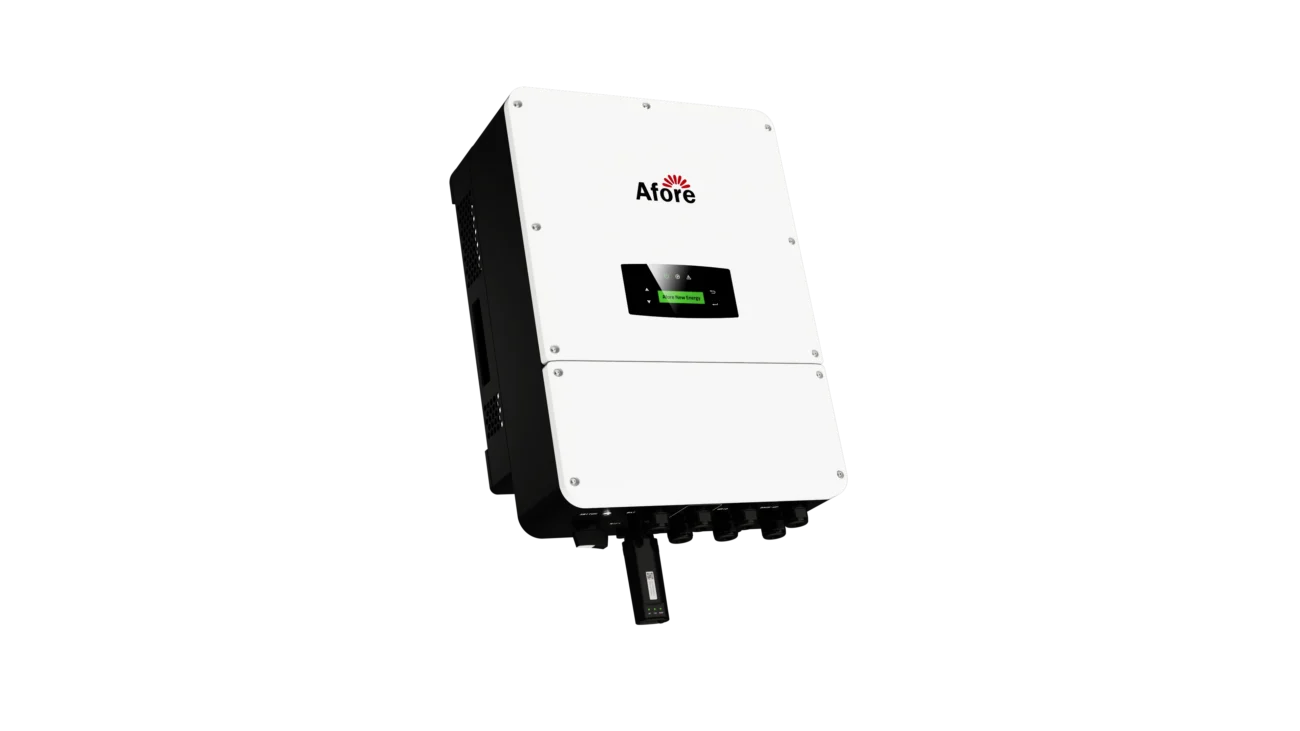
Preventing Future Inverter Problems
You’ve invested in solar energy to reduce your electricity bills, support sustainability, and gain energy independence. But like any piece of technology, your solar inverter needs care. While troubleshooting can solve existing solar inverter problems, proactive prevention is the smarter long-term strategy. The good news? Preventing inverter issues doesn’t have to be time-consuming or technical.
Below are practical ways to reduce inverter failure risks, maintain peak performance, and extend the lifespan of your solar investment.
Regular Maintenance Tips
Regular maintenance is one of the most effective ways to prevent solar inverter problems before they disrupt your energy production.
1. Perform Visual Inspections Every Season
Take five minutes every few months to visually inspect your inverter. Look for:
- Flashing lights or fault codes
- Dust or debris buildup on the unit
- Signs of corrosion or loose wiring on terminals (without touching them)
- Any changes in the sound (buzzing or fan noise)
These small checks often catch issues before they develop into major faults.
2. Clean the Area Around the Inverter
Keep the space around your solar inverter clean and clear. Remove leaves, cobwebs, or anything that could block airflow or cause overheating. Ventilation is critical, especially for string inverters installed in garages or outdoor sheds.
3. Schedule an Annual Professional Inspection
At least once a year, bring in a licensed solar technician to perform a full inspection. A proper service visit may include:
- Testing inverter input/output voltage
- Checking firmware for updates
- Inspecting grounding and insulation resistance
- Verifying MPPT functionality
- Reviewing the inverter’s historical performance logs
Regular servicing helps spot wear and tear early, minimizing the chance of unexpected inverter shutdowns.
Expert Tip: Many manufacturers require proof of annual service to maintain warranty coverage. Keep service receipts and reports on file.
Environmental Factors to Watch For
The performance and longevity of your solar inverter are highly influenced by where and how it’s installed. Certain environmental conditions—especially in harsh climates—can dramatically increase the likelihood of solar inverter problems.
1. Temperature Extremes
Inverters are designed to handle heat, but persistent high temperatures can degrade internal components like capacitors and cause overheating.
- Solution: If your inverter is installed in direct sunlight or an unventilated shed, consider shading or relocating it. Some homeowners also install fan kits or passive venting systems.
2. Dust, Moisture, and Corrosion
Outdoor installations are more vulnerable to dust and moisture. Over time, water ingress or salt (in coastal areas) can corrode internal circuits and terminals.
- Solution: Ensure your inverter is IP-rated (weather-resistant) and mounted above ground level. For humid or rainy climates, inspect for rust or condensation during the rainy season.
3. Rodents and Insects
Wiring attracts rodents, and warm inverter housings are inviting for insects.
- Solution: Use pest-proofing covers or mesh around vents (without blocking airflow), and inspect for signs of chew marks on cables or nests in enclosures.
- Quick Insight: Inverters in high-humidity regions tend to fail sooner if not properly sealed. Even slight exposure to condensation can lead to intermittent performance issues over time.
Monitoring Tools and Apps
Modern solar systems are smarter than ever. If you’re not using a solar monitoring app or web portal, you’re missing a valuable opportunity to detect solar inverter problems in real time.
1. Real-Time Production Tracking
Most solar inverters come with built-in Wi-Fi or ethernet connectivity. Using the brand’s monitoring platform, you can:
- Track daily, weekly, and monthly energy output
- See which solar panel strings are underperforming
- Get alerts when the inverter detects faults or efficiency drops
By catching anomalies early, you can prevent full system failures.
2. Email or Push Notifications
Set up automatic alerts through your app. You’ll get notified instantly if your inverter goes offline, trips due to a fault, or experiences a significant production drop.
- Real-World Example: One homeowner in Phoenix noticed their daily solar production dropped by 30% for three consecutive days. Thanks to a monitoring alert, they discovered a tripped circuit breaker—resolved within minutes instead of weeks of unnoticed energy loss.
3. Data Comparison Tools
Monitoring portals often let you compare your inverter’s performance to expected output based on historical weather data or system design specs. These comparisons are particularly useful for identifying slow-developing faults like:
- MPPT tracker inefficiencies
- String mismatch issues
- Inverter degradation
How Long Does a Solar Inverter Last?
When you invest in a solar energy system, you expect it to last for decades. And while solar panels often perform reliably for 25 years or more, the same can’t always be said for the solar inverter—a component that works much harder behind the scenes.
Unlike solar panels that passively absorb sunlight, your inverter is actively converting electricity from DC (direct current) to usable AC (alternating current) every single second the sun is shining. That constant effort takes its toll over time, making it one of the most failure-prone parts of a solar setup. Understanding how long a solar inverter lasts can help you better plan for replacements, reduce long-term costs, and avoid unexpected solar inverter problems.
Average Life Expectancy by Inverter Type
Not all inverters are created equal. The type of inverter installed in your system plays a major role in determining how long it will last before needing replacement or major repairs.
1. String Inverters (Centralized Inverters)
- Lifespan: Typically 10 to 15 years
- Overview: These are the most common type of inverters in residential solar systems. They’re affordable, relatively simple, and installed in a central location.
- Wear Points: String inverters are subject to thermal stress and can suffer from internal capacitor degradation over time, especially in high-temperature climates.
2. Microinverters
- Lifespan: 20 to 25 years
- Overview: Microinverters are mounted individually on each solar panel. Because they distribute the conversion load across all panels, they tend to experience less wear.
- Pros: Improved redundancy—if one microinverter fails, the rest of your system can still function. Many come with 20–25 year warranties, matching the life of your solar panels.
- Caveat: Due to their placement on the roof, servicing or replacing a microinverter can be more labor-intensive.
3. Hybrid Inverters
- Lifespan: Around 10 to 15 years, though newer models may exceed that
- Overview: These inverters handle both solar and battery inputs, making them more complex. With more moving parts and software dependencies, hybrid inverters may be more prone to solar inverter problems if not properly maintained.
4. Power Optimizer + String Inverter Combos
- Lifespan: 12 to 15 years for the inverter; optimizers may last longer
Factors That Affect Inverter Lifespan
Even within the same inverter category, lifespan can vary widely depending on environmental and operational factors. Here are the most influential ones:
1. Installation Quality
An improperly installed inverter—such as one placed in direct sun or poorly ventilated—will run hotter and wear out faster. Excessive heat is one of the most common root causes of long-term solar inverter problems.
2. Operating Temperature
Inverters located in hot garages or exposed to direct sunlight may overheat regularly. Overheating leads to internal component failure over time, especially in electrolytic capacitors, which are sensitive to thermal stress.
- Tip: Always install your inverter in a cool, shaded, and well-ventilated location. If that’s not possible, ask your installer about heat-resistant models or passive cooling options.
3. Usage Load
Systems that constantly operate near their maximum capacity put more strain on the inverter, potentially reducing its life. This is especially true in larger residential or commercial setups where daytime consumption spikes.
4. Electrical Grid Conditions
Inverters constantly interact with the grid. Frequent voltage fluctuations, poor grid stability, or brownouts can force the inverter to shut down and restart repeatedly, accelerating wear.
5. Maintenance and Firmware Updates
Keeping your solar inverter updated and clean extends its lifespan significantly. Many modern inverters rely on software to optimize performance and prevent faults. Ignoring firmware updates can lead to bugs or efficiency issues.
When Should You Replace a Solar Inverter?
If your inverter is over 10 years old, it’s wise to start budgeting for a replacement—even if it’s still working. Just like a car with 200,000 miles, it’s not a question of if it will fail, but when.
Here are signs that replacement might be imminent:
- Frequent error messages that recur even after resets
- Noticeable drop in energy production despite good sunlight
- Inverter running hot or unusually noisy
- End of manufacturer warranty and parts are no longer available
- Lack of compatibility with modern monitoring tools or battery upgrades
- Remember: A failing inverter doesn’t just affect its own output—it can bring your entire solar system to a halt.
Can You Extend Your Inverter’s Life?
Yes, absolutely. While no inverter lasts forever, several strategies can help you squeeze every last watt out of your current setup:
- Keep the inverter area clean and dry
- Perform annual inspections
- Use surge protectors to defend against grid instability
- Apply firmware updates provided by the manufacturer
- Avoid overloading the system with high appliance use during peak sunlight hours
Also, if you’re planning to upgrade your system—say, by adding battery storage—it might make sense to replace your old inverter with a newer hybrid model that supports batteries natively.
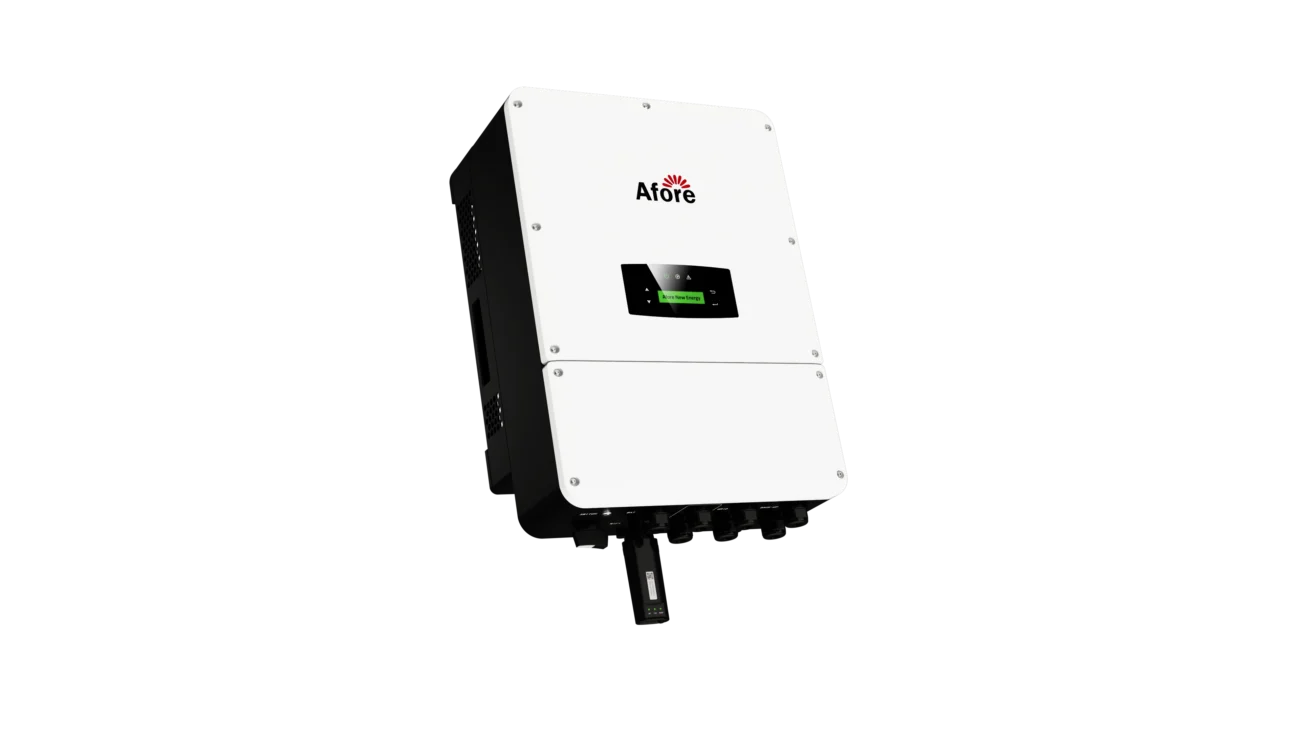
Conclusion
Your solar inverter is a powerhouse of functionality. It manages conversions, communication, and efficiency for your entire solar energy system. But like all technology, it’s susceptible to wear and failure. Understanding the most common solar inverter problems, from power losses to error codes, helps you respond effectively and avoid costly downtime.
Regular maintenance, proactive monitoring, and knowing when to call in the pros are key to extending your inverter’s lifespan. Whether you’re just getting started with solar or are years into your green energy journey, staying informed is your best defense against future headaches.
Don’t let solar inverter problems steal the shine from your solar investment. Be vigilant, stay informed, and enjoy a more efficient, reliable energy system.
FAQ – Solar Inverter Problems Answered
-
What are the common faults of an inverter?
The most common faults found in a solar inverter include:
• No power output: The inverter stops converting energy completely, often due to internal fuse failure or a lack of DC input.
• Error codes or warning lights: Faults like GFCI trips, over-voltage, ground faults, or internal communication failures often trigger red or orange lights and display codes.
• Random shutdowns: If your inverter is shutting down intermittently, it may be overheating, poorly ventilated, or experiencing unstable grid voltage.
• Low efficiency: Over time, inverters can degrade and produce less energy even when panels are performing well.
• Distorted waveform or grid sync issues: These affect your inverter’s ability to safely interact with the utility grid and can lead to flickering lights or damaged appliances.
Each of these solar inverter problems has unique symptoms and may require either simple resets or full replacements depending on severity. -
How do you know if your solar inverter is faulty?
There are several telltale signs that your solar inverter may be failing:
• Warning indicators: Flashing red lights or unfamiliar fault codes on the display.
• System underperformance: You’re generating less solar power than usual, even on sunny days.
• No inverter activity: A blank screen or no indicator lights could signal a major fault or power loss.
• Unusual sounds: Buzzing or clicking noises that weren’t present before.
• Monitoring alerts: If you use a solar app or online portal, it may notify you of a system fault or sudden production drop.
In many cases, these signs appear gradually. Monitoring your system performance weekly and checking the inverter status regularly can help you catch issues early—before they turn into expensive solar inverter problems. -
What is the life expectancy of a solar inverter?
On average, a solar inverter will last between 10 to 15 years, depending on the type, usage, and environmental conditions. Here’s a general breakdown:
• String inverters: 10–15 years
• Microinverters: 20–25 years
• Hybrid inverters: Typically 10–15 years, sometimes more with proper maintenance
Factors like excessive heat, poor ventilation, and fluctuating grid voltage can shorten this lifespan. That’s why preventive care is essential to reducing the frequency and severity of solar inverter problems.
Tip: Just because your panels are rated for 25 years doesn’t mean your inverter will last that long. Most systems require at least one inverter replacement over their lifetime. -
How do you tell if you have a bad inverter?
A “bad” solar inverter often shows signs before completely failing. Here are some clues:
• The inverter shuts down frequently for no apparent reason.
• Your energy bills start rising despite good weather.
• Inverter feels unusually hot to the touch or emits a strong buzzing sound.
• The solar monitoring app shows zero production, or logs show a consistent fault pattern.
• You’ve restarted the inverter multiple times, but it keeps failing.
While some of these symptoms can be temporary glitches, persistent issues often indicate the inverter’s internal components—like capacitors or relays—are starting to wear out. Ignoring these warning signs can lead to full system shutdowns, which are far more inconvenient and costly to fix. -
Can I repair a solar inverter myself?
In short: it depends, but be cautious.
You can handle basic troubleshooting yourself, such as:
• Restarting the inverter
• Checking the display for error codes
• Verifying your breaker panel hasn’t tripped
• Cleaning dust or debris around the inverter housing
However, internal diagnostics, software updates, or component-level repairs require specialized training and tools. Most solar inverter problems that involve internal circuits, capacitors, or firmware should only be addressed by certified technicians.
Important: Attempting DIY electrical repairs can void your inverter warranty and put your safety at risk. Always read the user manual and contact a qualified installer if you’re unsure.




